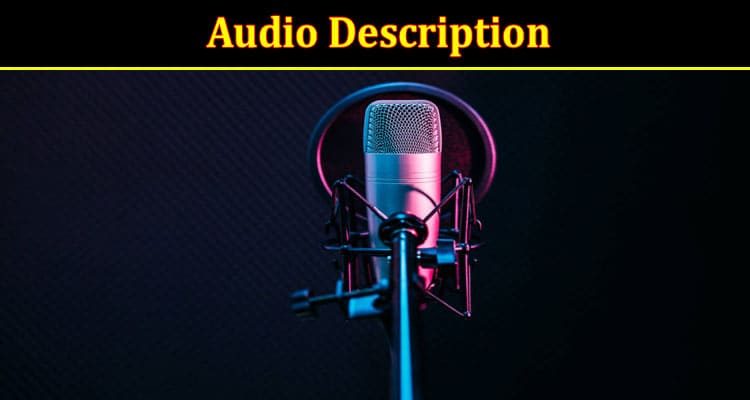Audio Description (AD) is a valuable tool used to improve accessibility and provide an enhanced experience for individuals who are blind or have low vision. AD works by adding a verbal description of the visual elements in a media presentation, including scenery, actions, costumes, facial expressions, body language, and other details that enhance the viewing experience.
Providing this additional information, allows those with vision impairments to more fully engage with and understand what is going on in a movie, television show, or other audio-visual presentation.
This article will explore the impact of audio description for improved accessibility and outline the benefits that AD can provide. We will look at how it can be used to transform the experience of those with vision impairments and how it can help to make media presentations more inclusive.
How Does Audio Description Improve Accessibility?
Using audio description services can also help to promote social inclusion for individuals with vision impairment by allowing them to more fully participate in the viewing experience and improving accessibility in media presentations.
Providing verbal descriptions of visual elements allows those without sight or who have restricted vision to experience a greater level of inclusion and understanding. This enhanced level of engagement is highly beneficial as it allows individuals to further comprehend what is happening in the presentation, making them more likely to be involved and engaged with the media.
Additionally, audio descriptions can help to create a more inclusive environment for all viewers by allowing those with vision impairments to be included in the viewing experience. This can help foster a sense of belonging and belongingness among media consumers, as those with vision impairments are no longer isolated by their disability. Moreover, many marketers and producers are now understanding the importance of audio description, leading to an increase in media content with AD as it helps to broaden the overall audience.
How Does WCAG Define Audio Descriptions?
The World Wide Web Consortium (W3C) defines audio descriptions as an “audio track that provides descriptions of the action, scenery and other visual elements in a video”. According to the WCAG, audio descriptions should be provided for all audio-visual content, so long as it is technically feasible and cost-effective to do so. This means that audio descriptions should be provided for media presentations, such as films, television shows, and online videos, whenever possible. Additionally, audio descriptions should be provided in a manner that is accessible to all viewers, regardless of their level of vision impairment.
The Challenges of Audio Description for Improved Accessibility
However, providing an audio description does present some challenges. One major challenge is that it requires additional resources and staff in order to create and implement, as well as additional time and effort to ensure that the audio description is accurate and effective. Additionally, providing audio descriptions requires specialized equipment, which can be expensive and may not be accessible to all media producers.
Despite these challenges, audio description can still be a powerful tool for improving accessibility and inclusion when used correctly. It is important that those providing audio descriptions take the time and effort to ensure that it is accurate and effective in order to create a positive experience for all viewers. Additionally, producers should strive to make audio descriptions available for as many presentations as possible, in order to ensure that those with vision impairments are not left out of the viewing experience.
How to Add Audio Descriptions to Multimedia Content
To ensure that audio descriptions are effective, producers should take the time to research and understand what elements of a presentation will benefit from an audio description and decide how they should be described. Additionally, producers should also consider the difficulties of providing audio descriptions and create a plan to ensure that they are available when needed.
Once a plan has been created, producers can begin adding audio descriptions to their content by using software that supports the creation of audio descriptions. This can include software such as Adobe Premiere Pro, which has built-in support for the creation of audio descriptions. Additionally, producers can also use services such as Audio Description Services to create audio descriptions for their presentations.
Conclusion
Audio descriptions can be a powerful tool for improving accessibility and inclusion among media consumers. By providing audio descriptions, producers can ensure that their content is accessible to all viewers, regardless of their level of vision impairment. Additionally, audio descriptions can help create a more inclusive environment for all viewers and foster a sense of belonging and inclusion. Despite the challenges associated with providing audio descriptions, producers should strive to make them available whenever possible in order to ensure that all viewers have access to their content.

